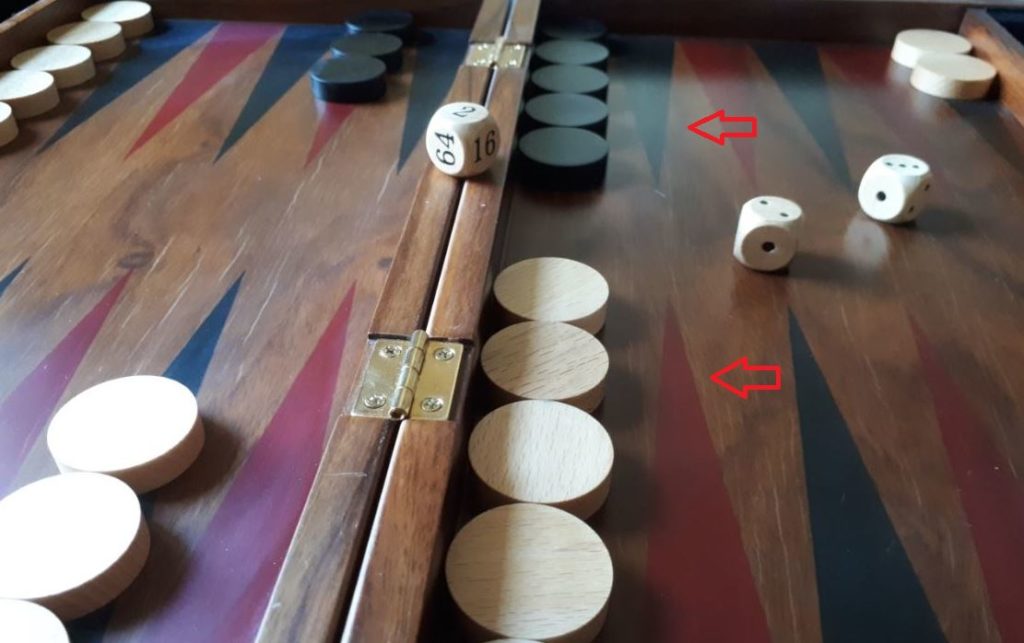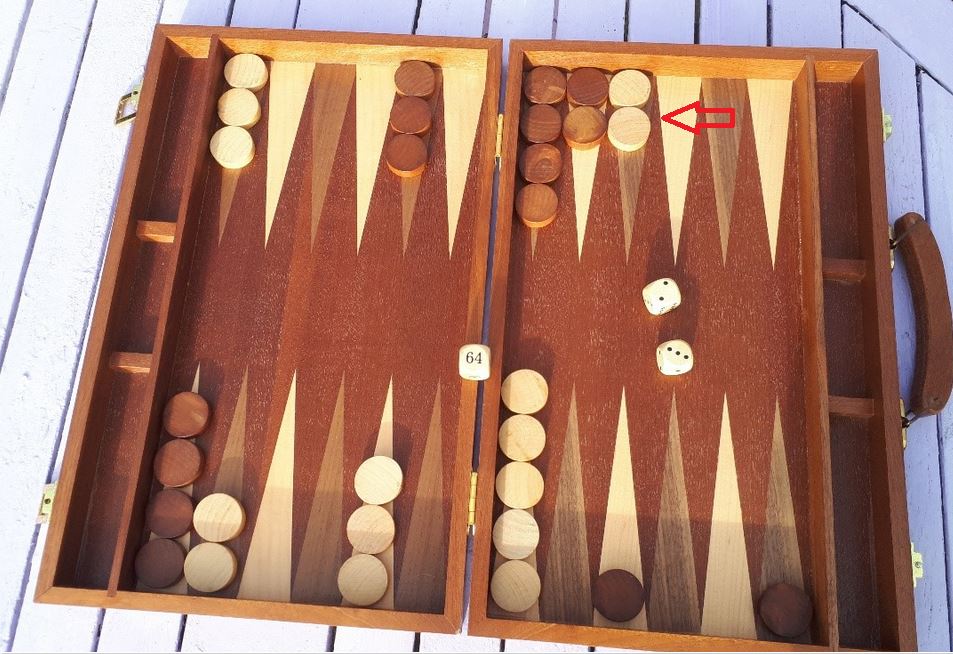Last updated on March 9, 2024
This Deluxe Backgammon post is another in our series for absolute beginners. In this instance, we look at the considerations that need to be made when deciding between aggressive or defensive styles of play. These concepts were first explored and recorded in Paul Magriel’s classic book from 1976, Backgammon.
An aggressive style of play involves taking calculated risks in order to better your position. It will involve hitting, splitting, slotting and the placement of builders to secure key points on subsequent rolls. In contrast, a defensive style of play is risk-averse. It basically, is a style of play whereby you avoid leaving blots at all costs. If you absolutely must leave a blot you will move to a point where it is least likely to be hit.
The opening game.
One of the first things beginners learn about backgammon strategy is to not leave too many blots for your opponent to hit. However, playing too defensively can also be a great mistake. Almost all beginners are guilty of playing too passively. In the opening game, you must play aggressively and fight for the key points. The key points include the bar-point, the 5-point and the 4-point on both sides of the board.
If your opponent leaves a checker on one of the key points in the opening game, you should reply aggressively by hitting it even if you can’t secure the point on the same roll. The objective is to prevent your opponent from securing the point and then make the key point yourself on a subsequent roll. Securing the key points with aggressive play early in the game confers a substantial advantage. However, avoid hitting loose on the 3, 2 or the 1-points since they aren’t points you want to make in your prime. The 5-point is the most important point on both sides of the board as it is both a priming point and a home board point. Play aggressively during the opening stages of the game.
Do you have an advanced anchor?
An anchor is a secure point within your opponent’s home board. At the start of the game, your back checkers form an anchor on your opponent’s 1-point. It is secure, but it is far too deep in the board to be of strategic use and it is at risk of being trapped behind a prime. However, an advanced anchor is formed higher in the board, usually on the opponent’s 5 or 4-points. The advanced anchor allows for more aggressive play, as you always have a safe landing spot if you need to re-enter from the bar. Additionally, an advanced anchor provides a couple of other strategic advantages. Firstly, it prevents your opponent from constructing an effective prime within their home board. Secondly, it can provide an attacking option if your opponent leaves any blots in their outer board. Play aggressively if you hold an advanced anchor.
How strong is your home board?
If your own home board is well-structured it allows for more aggressive play. This is particularly so if the opponent’s back checkers are trapped. In this instance, slotting can provide the opportunity to close gaps and build a deeper prime. The strong home board will mean that your opponent may struggle to re-enter from the bar if hit.
How strong is the opponent’s home board?
It is not just the strength of your own home board that you need to consider. If your opponent’s home board is stronger than yours you will need to adopt a defensive style of play. Strength depends on the number of home board points that are secure. It also depends on the quality of the secure points. The more key points that are held, the stronger the structure. A comparison of the number and quality of the points that are held needs to be made to determine which side is stronger. The stronger side can play aggressively, the weaker side must play defensively. This is because if the game develops into a hitting contest, the player with the strongest home board will have a clear advantage.
Does either home board contain blots?
If your opponent’s home board contains blots, you can afford to play aggressively. This is because you will have return shots against the blots if you are hit. The opposite applies if your home board contains blots because you risk a return shot after an aggressive play. It is best to play defensively and cover the blots on subsequent moves.
The number of checkers you have back in your home board.
The more checkers you have back, the more aggressively you must play. This is because being hit again is going to worsen the situation. Aggressive options include splitting or slotting to secure an advanced anchor on a subsequent roll or hitting loose blots.
The number of checkers your opponent has back in their home board.
If your opponent has escaped one, or perhaps both, of their back checkers an aggressive style of play is required. One of the key elements is escaping your back checkers. After all, the game cannot be won until all of your checkers are borne off. An aggressive style of play is required to hit your opponent’s checkers and return them to the starting position, where once again they have to escape.
Are you ahead in the race?
If you have a strong lead in the pip-count, for instance, 10%, an aggressive style of play can pay dividends. With a significant lead, breaking contact is a great option, and most of the time you will roll your way to victory. Otherwise, hitting or securing key points can push your opponent further behind in the count.
Criteria
Sometimes all the criteria will point towards the same style of play, either defensive or aggressive. However, sometimes the criteria will point towards different directions. It takes experience to know how to assess the criteria and to decide the correct style of play to adopt. The key is recognising when you need to make a switch and adapt to the changing state of the game.
Related content
How to win at backgammon from wikiHow, discussing aggressive and defensive styles of play.




I’m way too defensive, I build towers and I hardly ever win at backgammon. I just can’t bear leaving checkers on their own. Any advice?
Hi Sara, take a look at our playing guides. You probably understand all of the basics, make your way through the Beginners guides and then onto the Intermediate. Read the post about playing backgammon without fear. Backgammon is all about taking calculated risks and to do this you need to understand probability. Take your time and work through these guides. Apply what you learn and I guarantee your backgammon will improve. Thanks for taking the time to comment, Jason.